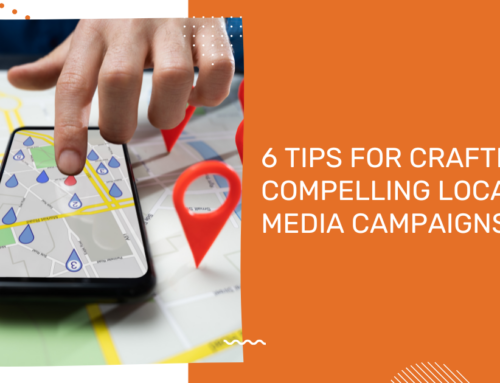Last time, we began a new series for pizza business owners on brand experience. We started with Why Brand Experience Matters and set the stage to explore various aspects of brand experience in-depth. Continuing this journey, now we’ll discuss one crucial element of brand experience: brand personality.
So, what is brand personality? According to the marketing experts at HubSpot, brand personality is “the set of human characteristics you attribute to that brand. Or, put another way – it’s how you’d describe a brand if it were a person.” A well-defined brand personality sets your pizzeria apart from the competition and helps to create deep, emotional connections with customers.
In this article, we’ll guide you on creating or tweaking your pizzeria brand’s personality. We have a lot to cover, so let’s dive in!
8 Brand Personality Guidelines for Pizzerias
These eight guidelines will take you through several stages of research to define your brand personality and then the key steps for practically implementing your personality in your pizzeria.
1. Get Clear on Your Brand

You can’t create a brand personality until you are clear on other essential areas of branding, such as your mission, vision, values, and story. After all, your brand personality must fit your brand and make sense when understood as a whole.
For example, if your mission is to offer an authentic Italian pizzeria experience, your brand personality may radiate with authenticity and have a sense of excitement and adventure. Or, if your vision is to have the most creative menu of any pizzeria in your local area, your personality may be founded on innovation, originality, personal expression, and individualism.
The additional work you do in steps 2-5 below will help you narrow in on your specific personality. For now, it’s just important that you get clear on what your brand is all about so you can create a personality that fits perfectly.
2. Research the Competition

Take a look around your community. What’s the pizza scene like in your area? The point isn’t to copy what competitors are doing but to find your unique position where you can stand out and shine.
Can you detect specific personalities among the other pizza places in the area? Examine their menu, website, and social media pages. Go undercover and find out what the ordering experience is like. Sign up for their email list to see what kind of emails they send.
What you see might feel generic or scattered, so you might be unable to detect a distinct personality. However, there is a chance that they’ve done similar brand personality exercises and created an official brand personality. Create a spreadsheet to gather your findings and make sense of the data.
Once you’ve gotten the lay of the land, you’ll probably see gaps. Those gaps are where your pizzeria can shine. Use this information (along with the information you’ll collect in the following steps) to choose a personality that is uniquely you and connects with potential customers.
3. Understand Your Audience

Knowing who walks through your doors or who you’re hoping to attract will also help you find the appropriate brand personality. After all, you’re aiming to create a personality that will resonate with them personally.
- How would you describe the personalities of the people visiting your pizzeria?
- What do they do for fun?
- What do they value?
- Why do they choose your pizza restaurant over others?
Your brand’s personality should mirror the traits and values of your audience so they will relate and form an emotional connection. Use conversations with customers, surveys, social media interactions, and input from your team to build customer personas that will inform your brand personality.
4. Ask Yourself Questions

Just like you can ask questions about your customers, you can also ask questions about your brand to help identify the most natural brand personality. For this exercise, you’ll want to think of your brand as a real person sitting across from you. It’s time for a little Q&A session:
- What is your brand passionate about?
- What scares your brand?
- Can you describe your brand in five words?
- How does my brand act when it goes to a party?
These questions help you peel back the layers and reveal the heart of your brand. After you answer these questions, ask others on your team too.
5. Use Brand Personality Models

So far, you’ve done a lot of research and thinking about your brand personality, but maybe you could use more guidance. For that, we turn to two popular brand personality frameworks that may help you narrow down further.
The most widely used is Aaker’s 5 Dimensions of Brand Personality, originally published in a 1997 academic research article. According to Aakers, brands display five main personality dimensions:
- Sincerity
- Excitement
- Competence
- Sophistication
- Ruggedness
This article explains each of the dimensions and gives examples of brands that exhibit each personality.
Another brand personality framework you can use is the 12 brand archetypes. Based on the work of psychologist Carl Jung, this model highlights twelve possible brand personalities.
- Creator
- Sage
- Caregiver
- Innocent
- Jester
- Magician
- Ruler
- Hero
- Everyman
- Rebel
- Explorer
- Lover
Check out this article to learn about each archetype and get examples of businesses that fit each personality.
6. Create a Brand Style Guide

If you’ve done the work in steps 1-5 above, you should now have a solid grasp of your brand personality. Now, it’s time to make it tangible.
A brand style guide is a rule book that helps your team stay on the same page and present a unified vision of your brand to the world. You’ll want to think about your logo, font choices, color pallet, language, and tone, all from the perspective of your brand personality.
Perhaps you have a brand style guide already. In that case, you’ll want to review everything to ensure your choices align with your selected brand personality. Remember, the point is to create a consistent and authentic picture of who your brand is.
For example, if your pizzeria’s personality is rugged and adventurous, you could choose earthy tones and a bold typeface. Meanwhile, if your personality is sophisticated and upscale, you might want a sleek logo and a minimalist color scheme.
Your brand guide ensures consistency across all touchpoints, from your menu and website to social media posts and marketing materials. Every element should echo your brand’s personality to make it instantly recognizable and relatable.
7. Put It into Practice

Your brand style guide is just the beginning. Now, it’s time to bring your brand personality to life in every aspect of your business. Making tweaks here and there can significantly improve consistency and authenticity. Here are some areas to consider.
- Does your pizzeria’s interior reflect your brand personality? Consider the layout, decor, lighting, and music.
- What about your website? Does it visually capture your brand personality? Is it written in a voice that sounds like it’s coming from your brand personality?
- How can you make your social media reflect your brand personality? What type of content should you post? What should the tone be? How should you respond to comments?
- Can you infuse your marketing and promotions with your brand personality? What sort of specials, coupons, and events would make sense?
- What about the finer details? For example, do your on-hold and in-ring messages reflect your brand’s tone and personality? Should you adjust how staff greet customers in person and over the phone?
In this step, you’ll also want to take time to train your team. Beyond a theoretical knowledge of your brand personality, you’ll need to help employees understand how to express it in their daily tasks and interactions and what displaying the brand personality looks like for different roles (manager, chef, server, etc.).
8. Revisit as Needed

By this step, your brand personality is defined and displayed in all online and offline interactions with customers. So, is the work complete? Not necessarily.
Brand personality isn’t set in stone. It’s a living, breathing aspect of your business that should evolve as you do. From time to time, you may need to revisit your guidelines and make important tweaks.
Pay close attention to how customers and employees respond to your brand personality. Is it resonating or not hitting the mark? Gather data from customer feedback, social media engagement, and sales for quantitative insights. Regular reviewing and adjusting can ensure your brand personality remains relevant and appealing to your audience.
Creating Your Brand Personality
By creating and displaying a unique brand personality, you can set your pizzeria apart from the competition and connect with your customers on a deeper level. By following these guidelines, you’re on your way to creating a distinctive brand that stands out!
As we continue to explore the various elements of brand experience, our next topic is brand storytelling. We hope to see you next time!



